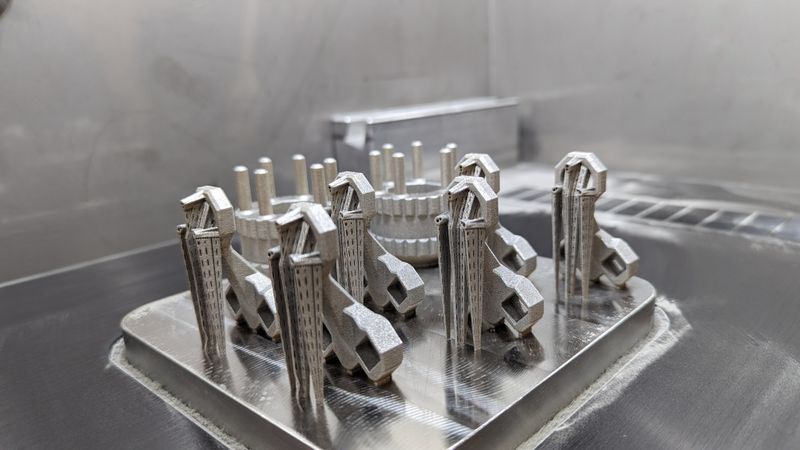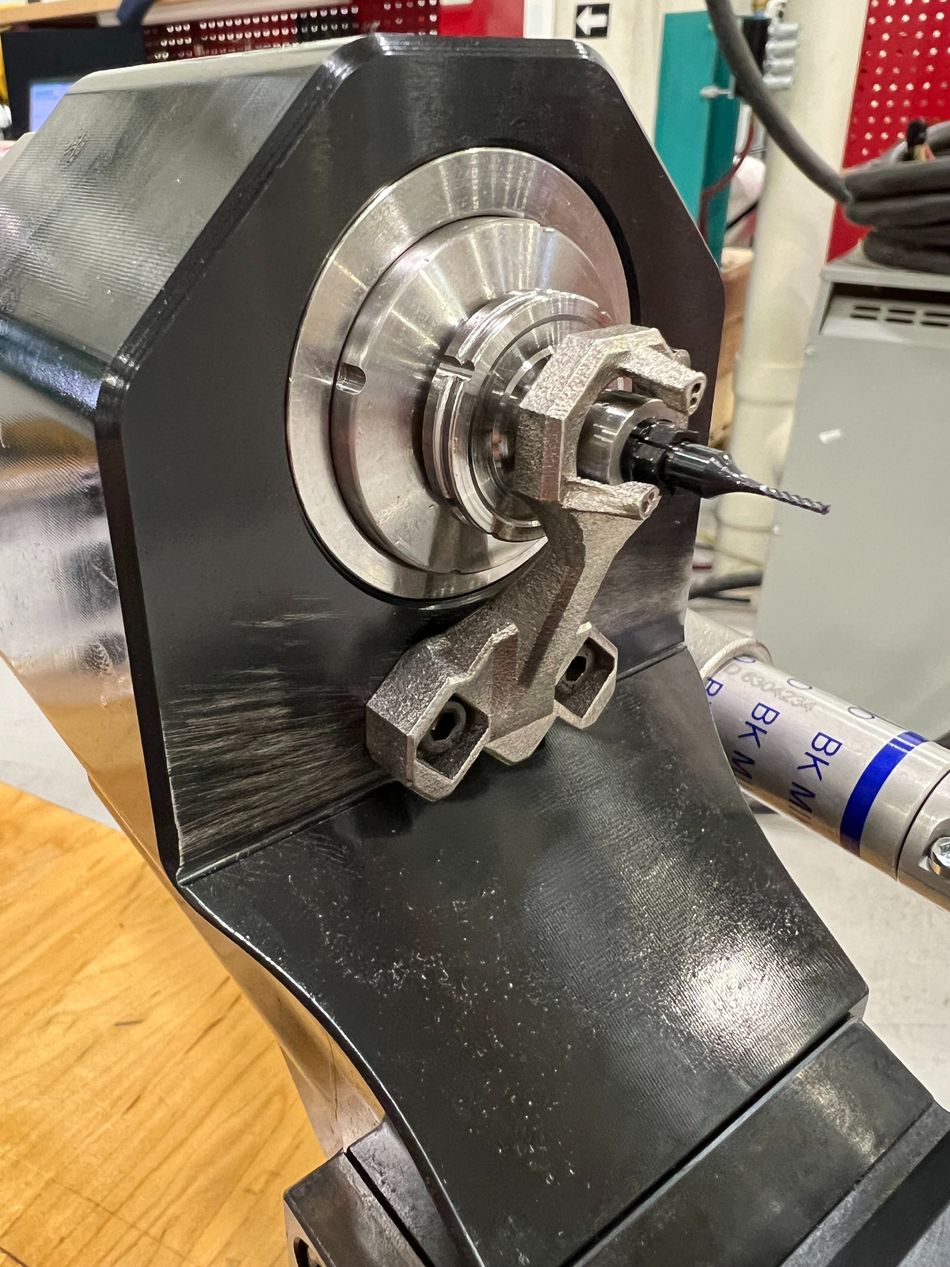Improving Efficiency with Customized 3D-Printed Coolant Rings
In the world of precision machining, efficiency and reliability are paramount. This case study explores the challenge, solution, and benefits of integrating a metal 3D-printed coolant ring into the machining process.

When a leading INDEX multi-spindle machine encountered significant challenges with chip removal, tool life, and coolant management, the introduction of a custom 3D-printed coolant ring provided an innovative solution that dramatically improved performance.
The Challenge: Poor Chip Removal and Inconsistent Coolant Coverage
The machining process on an INDEX multi-spindle machine was being compromised by poor chip removal, leading to shortened tool life and heightened fire risks. These issues stemmed from inconsistent coolant coverage, which was exacerbated by the machine’s compact design. Standard coolant nozzles were difficult to install due to limited space, and accessing tools with the probe was challenging. Moreover, operators were required to manually remove coolant lines during each tool change, introducing delays and variability that depended on the skill and experience of the operator.
This situation not only reduced the efficiency of the machining process but also posed safety risks, making it clear that a more reliable and effective solution was needed.
The Solution: A Custom Metal 3D-Printed Coolant Ring
To address these challenges, the engineering team designed a custom metal 3D-printed coolant ring with internal channels optimized for efficient coolant flow. Metal 3D printing was chosen for its ability to produce highly customized parts that precisely meet the stringent specifications required for this application.
The coolant ring was engineered to withstand coolant pressures of up to 40 bar, resist oil, and ensure non-flammability. It was fabricated from non-toxic, non-corrosive materials to maintain an absence of contaminants throughout its life cycle. The design also ensured that the coolant ring was easy to install, space-saving, and allowed for easy probe accessibility.
The coolant oil is directed through an adapter block into the inlet of the coolant ring. Inside the ring, the oil flows uniformly, being dispensed evenly from three openings to ensure precise delivery to the tool's tip. This design not only improved coolant coverage but also enhanced process stability, as the coolant ring could be removed and reattached independently of the operator, significantly reducing the time required for tool changes.
The Benefits: Enhanced Efficiency, Safety, and Tool Life
The introduction of the custom 3D-printed coolant ring brought numerous benefits to the machining process:
Better Chip Removal: The optimized design of the coolant ring ensured consistent and effective coolant flow, greatly improving chip removal and reducing the risk of tool damage.
Increased Tool Life by a Factor of 20: With improved coolant coverage and chip removal, the tool life was extended dramatically, reducing the frequency of tool changes and lowering operating costs.
Improved Process Stability: The ability to remove and reattach the coolant ring without relying on the operator reduced variability and enhanced overall process stability.
Three Times Faster Tool Change Time: The streamlined design and ease of reattachment allowed for much quicker tool changes, tripling the speed of this critical process and further enhancing productivity.
Safer Manufacturing Environment: The consistent coolant coverage and improved chip removal minimized the risk of fire, contributing to a safer working environment.
Conclusion: A Custom Solution for Optimized Performance
The integration of a custom metal 3D-printed coolant ring into the INDEX multi-spindle machine represents a significant advancement in machining efficiency and safety. By leveraging the capabilities of metal 3D printing, the engineering team was able to overcome the limitations of traditional coolant systems, providing a solution that not only met but exceeded the demands of the application. This case study highlights the transformative potential of 3D printing in creating tailored solutions that enhance the performance and reliability of critical manufacturing processes.
